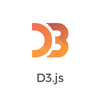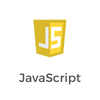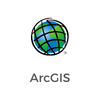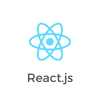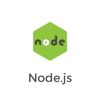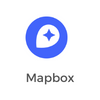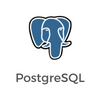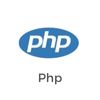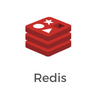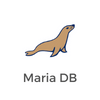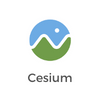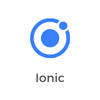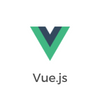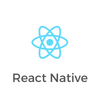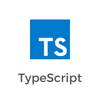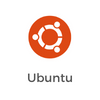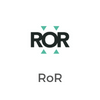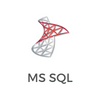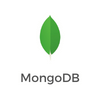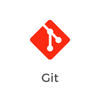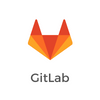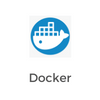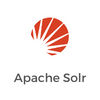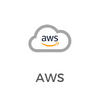Boost your business by our innovating industry expertise
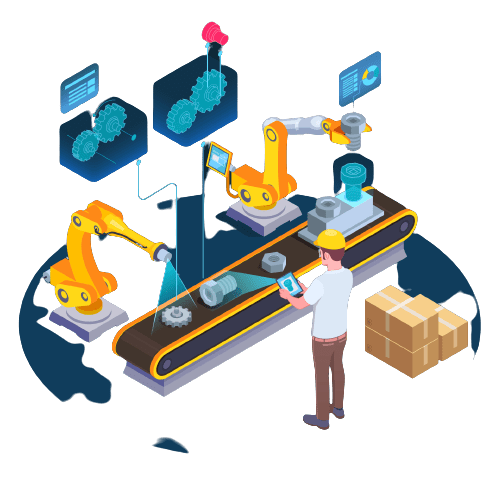
Industries We Serve
Metaverse
Metaverse is the new future of GIS. Metaverse is the spatialization of our
online activities, which enables a technology that deals with space analysis with a
rational and constructive fit. Building applications on top of the Metaverse concept
will be accomplished in great portion by the ability to integrate with and analyze
the data. Metaverse is the next battlefield where one can be virtually present
anywhere around the globe with the help of GIS. It helps firms become future-proof
with enhanced stakeholder cooperation and engagement made possible by an
infinite virtual environment.
Custom Metaverse Services at Metavystic
GIS data can be used to create accurate and
realistic 3D models of real-world environments, such as cities and landscapes,
which can then be integrated into the metaverse. Users can navigate and
explore these virtual environments using location-based services, such as virtual
maps and GPS-like navigation.
3D meshes play a vital role in the metaverse by providing a representation of
virtual environments and objects. They are created using the fundamentals of
Geographic Information Systems (GIS) such as spatial data, mapping, and
visualization. 3D meshes can be used to create detailed and realistic virtual
worlds and can be combined with other technologies such as virtual reality and
augmented reality to enhance the user experience.
GIS data can be used to create interactive and
immersive visualizations of geographic data within the metaverse, such as 3D
models of terrain, population density, or weather patterns. This allows users to
explore and understand the data in a new way.
Geotagged images, which are photographs or videos that have been
embedded with geographic information such as coordinates, play a vital role in
the integration of Geographic Information Systems (GIS) and the metaverse. This
integration allows for the creation of a more immersive and interactive virtual
world that is grounded in reality.
The integration of point cloud technology with Geographic Information Systems
(GIS) has the potential to greatly enhance the metaverse experience. Point
clouds, which are collections of data points in three-dimensional space, can
provide highly detailed and accurate representations of real-world
environments. When integrated with GIS, point clouds can be used to create
digital twins of physical locations, allowing for immersive and accurate
navigation within the metaverse. Additionally, point clouds can be used to
gather valuable data on physical environments, such as building structures and
topography, which can be used to improve the functionality and realism of the
metaverse. Overall, the integration of point cloud technology with GIS has the
potential to greatly enhance the metaverse experience by providing more
accurate and detailed representations of real-world environments.
GIS data can be used to create virtual
environments that mimic real-world environments. This allows users to conduct
virtual surveys and measurements, such as measuring the height of a building or
the distance between two points, in a virtual environment.
GIS data can be used to create location-based games
within the metaverse, such as treasure hunts or city-building games that take
place in virtual environments modeled after real-world locations.
GIS data can be used to create virtual reality
environments that mimic real-world environments, this can be used for training
purposes like emergency response training, urban planning, or construction site
management training.
GIS data can be used to provide location-
based experiences within the metaverse, such as virtual tours of real-world
locations, or virtual re-creations of historical sites.
Virtual reality (VR) technology has the potential to revolutionize the way in which
geographic information systems (GIS) are used. By providing a fully immersive,
three-dimensional representation of data, VR allows users to interact with GIS
data in ways that were previously impossible. This can greatly enhance the user
experience, making it more intuitive and engaging, and enabling more efficient
and effective decision-making.
LiDAR (Light Detection and Ranging) technology, when integrated with
Geographic Information Systems (GIS), enhances the ability to create and
maintain virtual environments in the metaverse. The combination of LiDAR data,
which captures highly accurate 3D information, with GIS data, which provides
contextual information such as land use, demographics, and infrastructure,
allows for the creation of immersive and realistic virtual worlds.
Smart Metaverse and GIS Technologies
Big Data
Machine Learning
Drones & Cameras
Robots
Virtual Reality
Augmented Reality
Surveying & Mapping
Point Cloud
Telecommunication
Geographic Information Systems (GIS) have a wide range of applications in the telecom industry, from planning to deployment and active O&M. This is especially true for mobile GIS that is cloud-based and can connect to the field and the office. Identify the areas where GIS can reduce expenses and streamline your operations.
Custom Telecom Software Services at Metavystic
GIS helps locations and areas where a telecommunication service hasn’t reached yet, or has problems broadcasting their services and suggests solutions to the problem
GIS is very useful in market segmentation. With the help of GIS maps, we can divide the customers in different groups which would help us decide where to allocate towers and how many towers needed in an area.
Telecommunication companies can use GIS to find out their target audience in a specific market. This helps them better decide what product to launch in which specific market and what quantity is needed.
GIS helps telecom companies in accessing their network points despite of the signal strength. It helps them analyzing the network status for a particular region or a specific time.
Smart Telecommunication Technologies
Big Data
Machine Learning
Drones & Cameras
Phase Tracking
Agriculture
Metavystic enables established Agribusinesses and Agritech startups to come up with innovative solutions for farmers to execute sustainable operations and to make data-driven decisions leading to increased profitability and sustainable BUSINESS growth.
Custom Agritech Software Services at Metavystic
Agricultural Technology or Agri Tech is used to produce more with less. Agritech makes farming more efficient and fruitful. It involves all steps related to farming. From field monitoring to crop sowing, caring for it, all the way to the food supply chain.
GIS is closely related to Agritech in a way that the usage of drones, imageries, and robotics are all handled by GIS.
Remote sensing is one of the vital tools used in modern agriculture. It is used to gather information from devices over time. This information is then used to analyze different aspects of agriculture and can be used in decision-making, crop and farm preservation, development, etc. Several sensors are used in remote sensing. There can be satellite sensors, aerial sensors, and ground-based sensors. All these sensors have the capability to capture information which is then used for various analyses and eventually, used to make decisions on how to make crop growth better and more efficient.
CSM is a simulation model that describes every process of crop growth. From seed plantation to producing yield, all the steps are explained in detail using this model. It uses different factors to simulate actual crop growth like weather conditions, soil conditions, and crop management. This method requires proper input data to accurately display the simulation. If the data is inadequate, the simulator will crash or display lesser accurate results.
Identification of Pests and plant diseases are the most important factors in the AgriTech industry which help in determining the quality of plants and their yielding as well. GIS plays a crucial role in the identification of nutrients, water stress, yields, and plant analysis by implementing deep learning, digital image processing, and remote sensing. Google Earth Engine provides real-time data so the farmers can take precautionary measures beforehand.
Precision Agriculture is an agricultural management strategy that works with gathering, processing, analyzing various kinds of data such as temporal, spatial, and individual, and combines it with other factors to make better management decisions for better and more efficient resource usage.
This technique can provide us with better productivity, higher quality, increased profitability, and sustainability of our agricultural production. GIS can help analyze soil data and combine the study with traditional farming practices to determine what kind of crop to sow and how to maintain soil health that would benefit the crop best.
It includes monitoring different environmental factors like temperature, humidity, rainfall, soil quality and health, pests, seed, etc. to better understand what kind of dangers the crop is facing. This method is very helpful in making informed decisions and making a crop healthy and producing as much yield as possible.
Satellite crop monitoring is the technology that is used to provide real-time crop monitoring using spectral analysis of high-resolution satellite imagery of the field. This method is much more efficient in tracking various dynamics of a crop and its production.
Crop suitability is the process of identifying an area that is best suitable for crop growth based on the soil and surrounding parameters. Specific characteristics come into play for this purpose such as water levels, soil conditions, rainfall availability, surrounding conditions, etc. These characteristics are evaluated as a whole and an action plan is formed suggesting which crop is best to plant in a certain area and in what season.
Location-based suitability answers all your concerns for the crops regarding “what” should be grown, “when”, and “where”. Determining the soil type, patterns of the existing vegetation, the right fertilizer recommendation for your land, preventions of pest attacks are the major issues in Agriculture. To excel in the decision-making of such critical issues/factors, GIS and Location-based suitability provide accurate data, identify, and analyze the soil and water analysis, yield, land characteristics, land use, topography, check if the land is irrigated or not, find the best location for your crop, and suitability of the land for rainfed crops. The use of GIS in this application creates the infinite potential to enhance crop productivity and minimize environmental impact.
Smart Farming Technologies
Big Data
Machine Learning
Drones & Cameras
Smart Farming Sensors
Weather Forecast
Robots
Phase Tracking
Automated Irrigation
Healthcare
Using the data from Electronic Medical Records (EMR) and Electronic Health Records (EHR), we can build disease density maps to better visualize the disease outbreak in an area or a region. Not only this, this information can be used with various spatial analyses to suggest health patterns describing paths of various diseases and virus spreads.
Custom Healthcare Software Services at Metavystic
To continuously provide safer and higher-quality care, create a comprehensive perspective of your patients’ clinical data. We’ll work with you to create and implement unique EHR/EMR apps that facilitate electronic health record administration, implement paperless, automated medical processes, and enhance system compatibility. Your efficiency will consequently increase, and your operating expenses will go down.
Utilize your data to drive well-informed clinical and operational decisions across your healthcare organisation. Your healthcare organisation can swiftly and affordably implement advanced healthcare data analytics solutions by utilising our medical software development services. You’ll be able to efficiently manage resources that have a big impact on your operational operations, processes, and patient care, which will lead to better clinical outcomes and cost optimization.
We create specialised medical imaging software, including mobile desktop web solutions that enable doctors and radiologists to work more quickly and effectively. Health data management systems, healthcare CRM applications, and health information systems (HIS) are all effortlessly integrated with the technologies we provide (HDMS). Additionally, it makes it possible to process medical images quickly and securely while adhering to all international standards and norms.
To increase revenue, maximise reimbursement rates, and ensure the financial stability of your healthcare firm, automate and streamline every step of the billing procedure. We’ll work with you to put in place specialised medical billing software programmes that are fully compatible with your EHR systems and can increase interoperability, efficiency, and security.
Our software specialists in the healthcare sector will assist you in developing and implementing a range of mobile health applications, from those for practitioners and healthcare facilities that offer advanced features for health monitoring, medication tracking, billing, and prescription management to those for patients that offer the same.
Smart Healthcare Technologies
Big Data
Machine Learning
Drones & Cameras
Robots
Benefits of GIS for Healthcare
GIS is an effective tool that has been used to solve a number of important health challenges, from disease management to improved healthcare. The amount of advantages, which may include the most crucial link to be created between hospitals and the communities they serve, is certain to keep growing as more healthcare professionals accept and integrate the program.
- Detecting Health Trends
- Making Use Of Personal Data
- Healthcare Marketing And Planning
- Monitoring The Spread Of Infectious Disease
- Epidemiology Data Analysis For Incarnation
- Resource Allocation
- Information Gathering
- Spatial Pattern Analysis
- GIS In Wearable Technology
- Disease Research And Intervention Plans
Tech Stack
